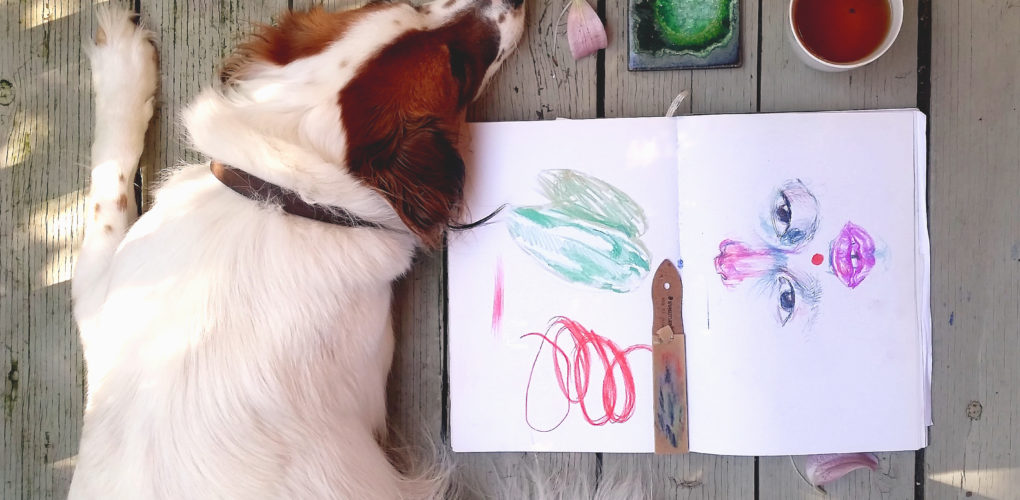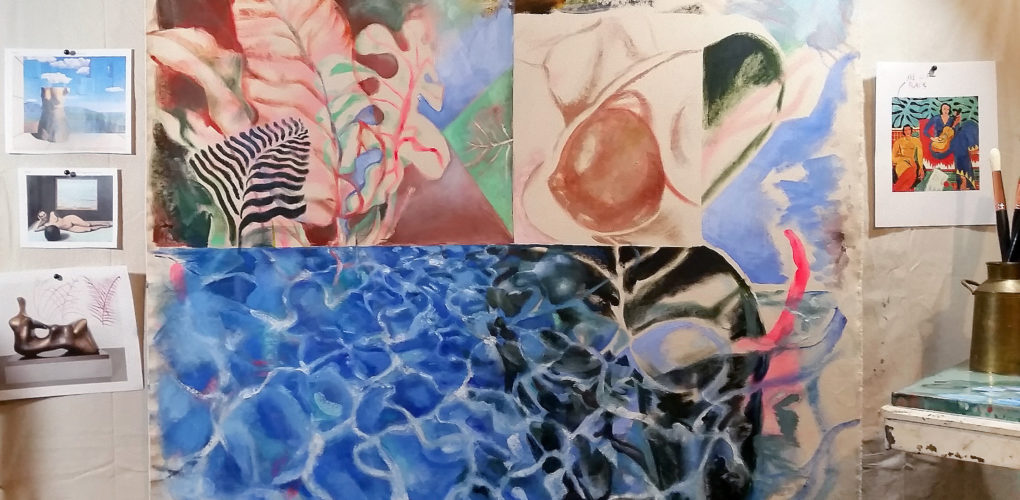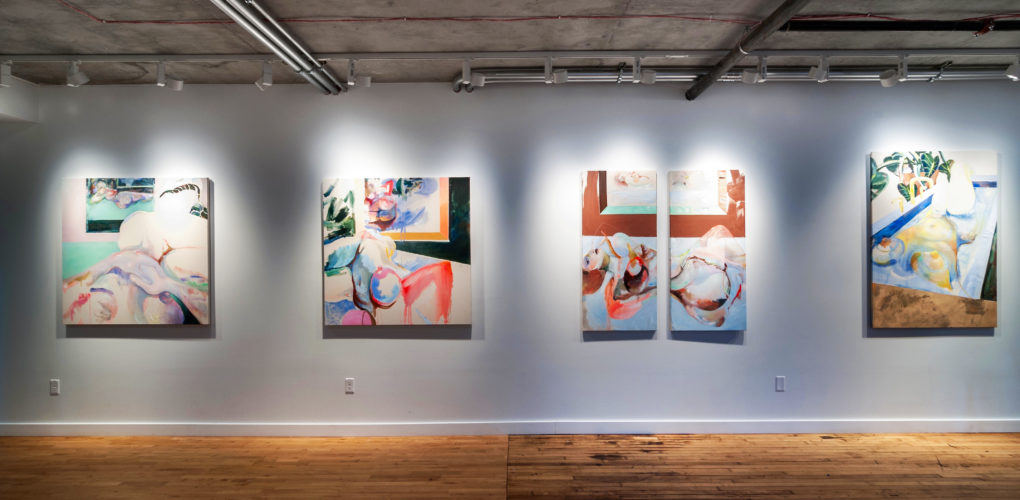One to Watch
 Hazel Miller: Chromatic Introspection
Hazel Miller: Chromatic Introspection
Washington-based artist Hazel Miller reiterates traditional subject matter (figures, still lifes, interiors) and art historical imagery to contemplate the nature of perception, the female experience, and the relationship between art and life. Her paintings take interest in the tension between subjecthood and objecthood, in the connection of the internal and external worlds. Miller received her BFA at the Pacific Northwest College of Art and has exhibited at The Other Art Fair, Los Angeles. In 2018, she was awarded the Elizabeth Greenshields Foundation Grant to complete a self-designed residency.
1. What are the major themes you pursue in your work?
I draw a lot of inspiration from observing my daily life, including passing moods, thoughts, and feelings. I’m fascinated by the nature of perspective, the female experience, and the concepts of internal/external, mind/body, and subject/object. Lately, I have been depending more on my library for inspiration. For example, I’ve learned that Virginia Woolf (who had bipolar disorder, like I do) made discoveries about consciousness and the self long before modern neuroscience confirmed them, and those insights are expressed beautifully in her novels. I strive to go about my paintings in the same way, not to make any scientific discovery but to see as much truth as I can and explore my experience of reality.
2. How did you first get interested in your medium, and what draws you to it specifically?
I fell in love with the vivid, buttery quality of oil paints. Color is a language that I love speaking and comes naturally to me, and as a colorist, paint gives me a whole universe of options. It also offers a wide variety of textural goodness; there’s nothing like the feeling of painting impasto. Plus, painting overlaps heavily with drawing (the boundary between the two is indistinguishable at times), which was my original avenue into art.
3. How has your style and practice changed over the years?
Though I still have an experimental mindset that produces a wide range of painting “styles”, I seem to get more focused with my experiments each year. I’m getting more interested in the subtleties of body positioning, in the overall mood and message of a piece, and in more dramatic, graphic compositions. My work is honing in on the figure again. I’ve been less interested in individual likeness and more interested in the language of limbs and the weight of fat and muscle. My palette is darkening but is never without moments of intense color. Lastly, I’m currently working out how to best introduce text into my pieces (a huge challenge)… I’m not sure if anything will come of it, but it’s interesting.
4. Can you walk us through your process? Do you begin with a sketch, or do you just jump in? How long do you spend on one work? How do you know when it is finished?
Lately I’ve been making more work directly from sketches, though I still depend on photographs for references (both found images and those of my own creation). I let my palette and brushes get muddy, which naturally produces a nice range of saturation. I typically spend more time looking and envisioning than I do actually painting; some of my pieces take a few months to complete, but I might have spent only 20 hours or so physically painting on them. I know a piece is done when my eye moves around the canvas with ease and nothing screams out at me. I am always wary of overworking a piece.
5. What are some of your favorite experiences as an artist?
I love what being an artist does to my vision. I love that life becomes literally more vibrant for me the more that I am painting, my eyes becoming more sensitive to subtle shifts. When my mind is uncluttered and in tune, the visual world can be really miraculous, full of chaos and order, depth and flatness, coolness and warmth.
6. Who are your favorite writers?
I like to be in the middle of one fiction book and one nonfiction. I’m currently in a research-heavy phase of my practice and am exploring neuroscience, mental illness, female perspectives, beauty, and enlightenment. I’m reading Michael Pollen’s How to Change Your Mind about psychedelic research, A Woman Looking At Men Looking At Women by Siri Hustvedt, and Mrs. Dalloway by Virginia Woolf. I loved On Beauty by Zadie Smith and Why Buddhism is True: The Science and Philosophy of Meditation and Enlightenment by Robert Wright.















